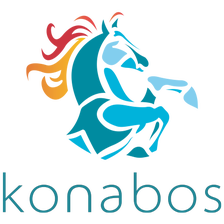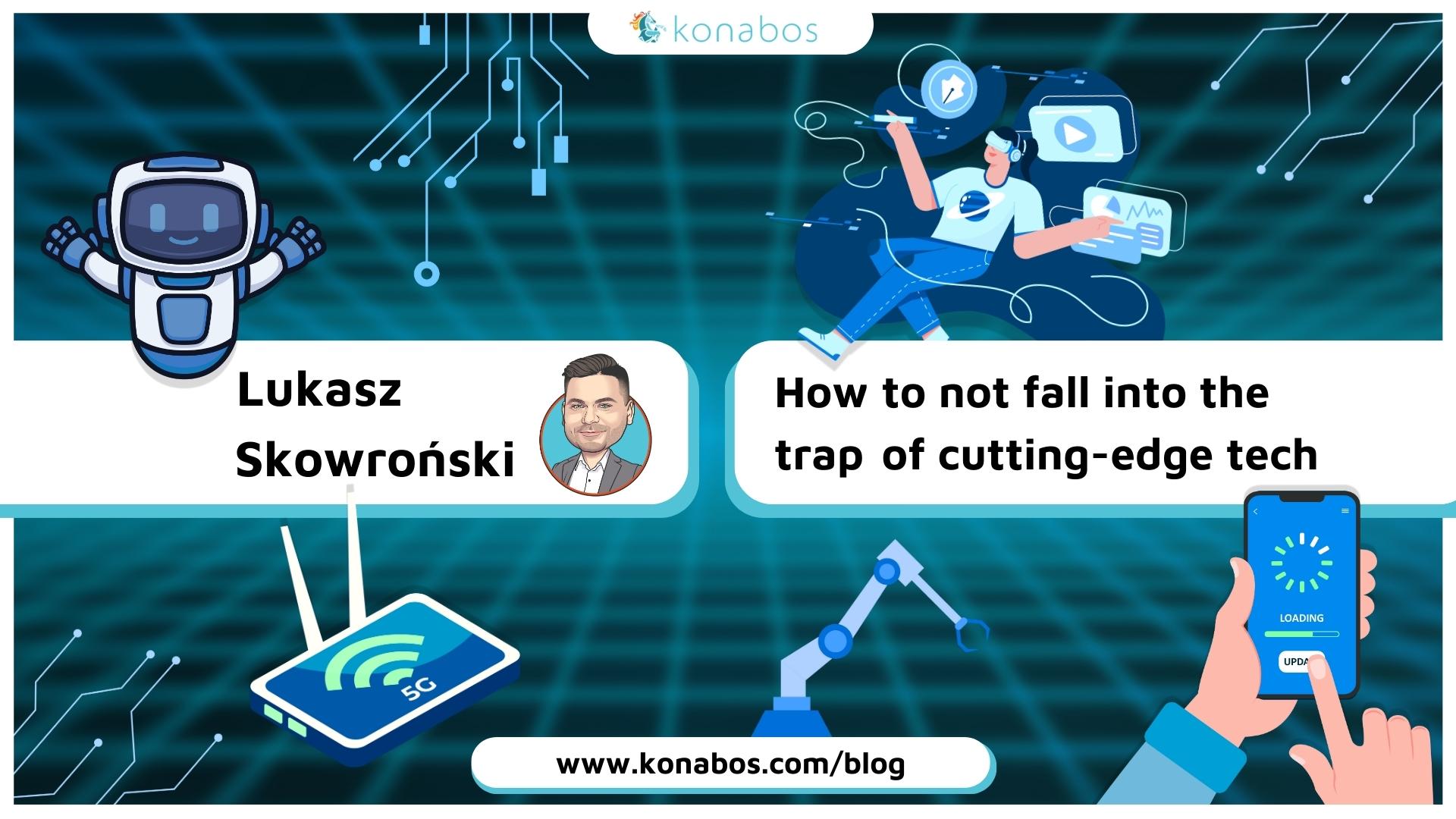Don’t fall into the trap of the cutting-edge products and technologies
Lukasz Skowroński - Senior Solutions Architect
6 Aug 2024
The modern world changes so quickly nowadays. Changes that are happening now in companies influence all of us. If you try to follow and understand the direction of where everything is going – you probably read a lot on the specialized portals or even LinkedIn. Do you feel overwhelmed by the amount of information? Do you know how to process what all the specialists share with you and what the future brings in their opinion? No? The good news is – they do not know that too.
With this article, we will try to change your perception of what is happening and let you give yourself some space to take a step back before you move forward.
There is always something new that everyone brags about
New technologies, new architectures, artificial intelligence, you name it. Technology leaders, your competitors, colleagues from different departments tend to brag about the cutting-edge technology or product that they brought to the company or successfully used in their environment.
At that point everyone would feel a desire to bring in the same – instead of that, we should start asking questions:
- Is their company or product similar to ours?
- Is the size of the company similar?
- How easy would it be to bring in that technology/architecture to your company?
- What would need to be changed in addition?
- What would be the cost of change (before you even start thinking about benefits)?
During the work with global enterprise companies, we learned that the cost of adoption can exceed the benefits very easily. The complexity of adoption can sometimes make also the change impossible to apply. It brings us to the point where a new addon is not just an addon, it is part of the ecosystem and has to find its place in the company's processes. It means that a small company without complex processes, reaching out to just a few markets can adopt new technology quickly, a large company, serving products globally needs to prepare a multimillion-dollar budget to even start the process – where is the benefit at that point?
It is not always about money, an advantage over competitors and our team happiness are what we care about
You may have heard it before – probably from the people who know that the cost of adoption forms will be low or have secured enough money to do the shift. Well in opposition to the paragraph’s title, It is always about money that you can spend, save or get, sometimes you may just need to wait for it longer – this is why it is called investment.
Investment is a key word here – if you plan to adopt a new technology because you see a real chance to benefit thanks to them, then it makes sense. If you fall into the trap of bringing to the company something that is cool, but you are not sure what will be the result of it for you and your company – I would think twice about it as it may not be worth a penny.
From time to time, we hear also different arguments justifying why it is worth of effort, arguments like:
- All our competitors have it already
- Our team needs it
- This is the trend everyone follows
- New product will increase efficiency
- We will save money thanks to it
At first glance all of the arguments make sense, but there are the questions that many forget to ask:
- Do competitors have it?
- how can we compare them to our situation and our goals,
- do we know if they benefit from it, or only brag about it
- Does our team need it?
- Why do they need it
- Can we achieve the same with already existing technologies and tools
- How will we benefit from it?
- Is this a trend everyone follows?
- Why do they follow it?
- Can we join that group in the way we resolve some of our existing challenges?
- Does the new product increase efficiency?
- Can we increase efficiency with what we have got?
- Will we replace the already existing product with a new one, or if we add another one to our organization, what will be the cost of it?
- Do we save money thanks to it?
- Did we consider the cost of adoption?
- Did we consider the cost of licenses?
- Did we consider the cost during the migration phase?
- Did we consider the change management costs?
- Did we consider the cost of process adjustment?
There are so many things that have to be taken into consideration before a decision is made.
Enough theory, are you ready for Artificial Intelligence, Composable Products, Headless architecture?
The question from the title of this paragraph brings us back to the cutting-edge technologies and architectures that today’s world starts to adapt. Many small companies are there already, same as start-ups that often need to use all of that for visibility reasons.
Enterprise-level companies due to their size start to adopt all of that too, but at their own speed.
Is it something to worry about? Maybe we all should behave as enterprise-level companies and ask many more questions before the decision.
Due to my specialization I very often see people saying, “we will use headless architecture now” or “instead of using one product doing almost everything we will start building composable ecosystem”.
Sometimes it may be a good idea, sometimes it is not, slow down and ask more questions as it all depends.
If you consider headless architecture, you should ask:
- Are your current architecture limits in any way your goals?
- Is your current software/product being in the state that makes you feel you used all power of it?
- Is your team trained and ready to work with a different technological stack?
- Do you have at least a raff idea of how the change will be implemented in your team?
- Do you really benefit from that architecture, or is it only a fancy gadget that you or your team want to work with?
If you consider bringing in a composable products to replace some of the already existing features of product that you use now, you can ask yourself:
- If you use 100% of what you have?
- If you use your existing tools in a way they were designed to be used?
- Is your infrastructure ready to be integrated with composable (probably SaaS products)?
- Is your governance well organized to add more complexity to it?
- If you know what skills your team needs to have to be able to work with a new tool and if your team has these skills?
Many questions require time to be answered, time that you need to decide.
Summary
As we were trying to prove in this article – the decision about bringing new toys to the company is not only about a will, but more about awareness of needs and challenges that the company faces. Headless and Composable world is not a good choice for everyone – same as artificial intelligence. Always start with asking the right questions to ensure you understand all the factors that will influence the success or failure of adoption.
Ready to bring innovation to your company? Before diving into Headless and Composable solutions or AI, allow us to ask you the right questions.

Lukasz Skowroński
For over 18 years, I have developed numerous solutions for customers worldwide. I specialize in DXP platforms, including Sitecore, Xperience by Kentico, and various CMSs such as Umbraco. So far, I have been awarded nine times with the Sitecore MVP title, once with the Kentico MVP. I continuously support various communities by organizing local user groups and larger conferences like Sitecore User Group Conference Europe (SUGCON Europe), as well as by sharing knowledge through blog posts.



Share on social media